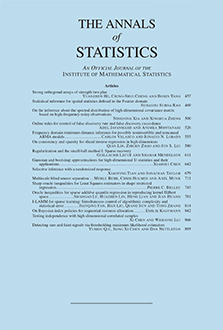Abstract
A first general principle and nowadays state of the art for the construction of powerful multiple test procedures controlling a multiple level $\alpha$ is the so-called closure principle. In this article we introduce another powerful tool for the construction of multiple decision procedures, especially for the construction of multiple test procedures and selection procedures. This tool is based on a partition of the parameter space and will be called partitioning principle (PP). In the first part of the paper we review basic concepts of multiple hypotheses testing and discuss a slight generalization of the current theory. In the second part we present various variants of the PP for the construction of multiple test procedures, these are a general PP (GPP), a weak PP (WPP) and a strong PP (SPP). It will be shown that, depending on the underlying decision problem, a PP may lead to more powerful test procedures than a formal application of the closure principle (FCP). Moreover, the more complex SPP may be more powerful than the WPP. Based on a duality between testing and selecting PPs can also be applied for the construction of more powerful selection procedures. In the third part of the paper FCP, WPP and SPP are applied and compared in some examples.
Citation
H. Finner. K. Strassburger. "The partitioning principle: a powerful tool in multiple decision theory." Ann. Statist. 30 (4) 1194 - 1213, August 2002. https://doi.org/10.1214/aos/1031689023
Information





